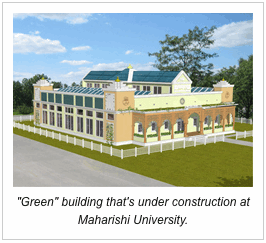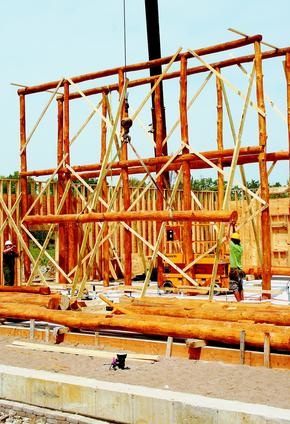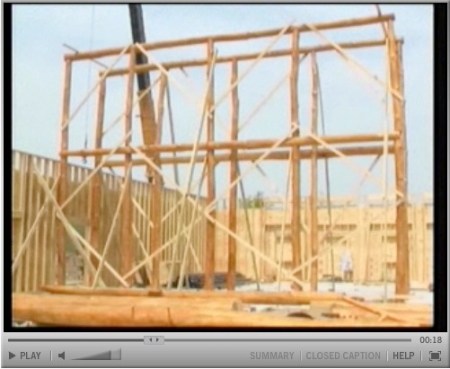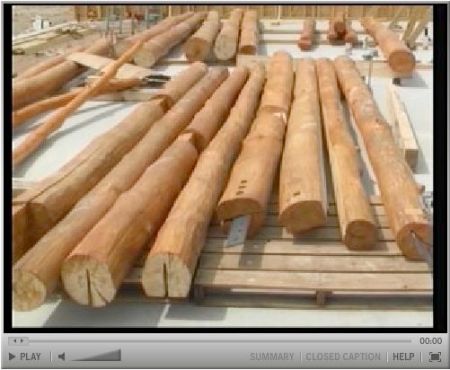Maharishi School Students Research Jefferson County Farming Effects on Area Waterways, Win State Science Fairs
 Maharishi School Students, Minna Mohammadi (l) and Pearl Sawhney (r), win at State Science Fair. Their research investigated Jefferson County Farming Effects on Area Waterways. – Photo clickphotographyonline.com
Maharishi School Students, Minna Mohammadi (l) and Pearl Sawhney (r), win at State Science Fair. Their research investigated Jefferson County Farming Effects on Area Waterways. – Photo clickphotographyonline.com
Pearl Sawhney and Minna Mohammadi, Maharishi School sophomores, swept the top prizes at the Eastern Iowa State Science Fair (EISEF) on March 21, as well as the State Science and Technology Fair of Iowa (SSTFI) on March 26th and 27th with their project entitled, “Farm Feeding Practices: Exploring Solutions for Environmental Sustainability.” They also won the most coveted prize – a free trip to participate at the INTEL International Science Fair in San Jose with their teacher and mentor, Dr. Mousumi Dey, on May 8th – May 14th.
They won the following categories: first place and $100 at the EISEF, special prize: Iowa Environment and Water Pollution Board, first place and $100 in the Seminar Team Project category, the Power Point Hope Award, first place and $75 in the Environmental Science Senior High category, first place and $1000 for Senior High team, grand prize overall and $1000 in the Senior High category, Iowa Angus Auxiliary Award.
Mohammadi and Sawhney were sponsored in part by Jefferson County Farmers and Neighbors Association. They received mentorship and testing materials from the USDA. Dr. Dennis Dey and Dr. Rajeev Sawhney provided additional mentorship. The research team examined the relationship between animal feed and pollution in streams. The project impressed and intrigued judges, as it is an area not previously researched. They tested three different types of farms: confined animal feeding operations, conventional farms, and organic farms.
“Animal feed was tested for unbound phosphorous, important for bone growth, and phosphorous bound to phytates, which is indigestible and excreted by the animals,” explained Sawhney. “Manure is applied to fields as fertilizer. Pollution occurs when bound phosphorous enters local streams with run-off. We tested nearby streams, upstream and down, for bound phosphorous levels and biological oxygen demand. Biological oxygen demand is the level of oxygen needed to decompose dead organic matter. High levels of bound phosphorous increases the algae and phytoplankton populations. When the phytoplankton and algae die naturally, they use more oxygen to decompose than they did when living. This significantly lowers oxygen levels, creating an uninhabitable environment. The effects of the bound phosphorous are compounded when the streams enter the Mississippi River. This type of pollution has created a dead zone in the Gulf of Mexico that is the size of New Jersey.”
“We found that water running downstream organic farms had the lowest phosphorus content, and biological oxygen demand, and that water running downstream CAFOs had the highest phosphorus and biological oxygen demand. This indicates that organic farms, of the farms we tested, have the least negative effect on nearby water bodies,” explains Mohammadi. “We plan to continue our research and extend it to other counties.”
“The students performed multiple tests,” said Dr. Dey. “All the results were highly statistically significant. The girls collected water under extremely difficult conditions to minimize errors. Also, they took great care and every precaution to get the most accurate results. Such dedication and focus at such a young age is rare. They are continuing to collect more samples. If the area farmers could allow these two young researchers to collect water and soil samples from their land on a regular basis and organizations could help them with some more monetary support, we can have even more thorough results.”
When asked how the students chose their topic, Sawnhey said, “We wanted to find a local solution to a global problem.”
“We didn’t realize what we were getting into,” added Mohammadi. “It was difficult, cold, muddy work collecting samples!”
“We are extremely proud of the high level of scientific research that Minna and Pearl produced,” said Maharishi School Head, Dr. Richard Beall. “As much as their accomplishments, we’re also proud of the social significance of their topic. This research bears real consequence on public health.”






 Matt Milner/The Courier Construction workers had to move carefully to avoid excessive damage to the tree trunks that will be a signature element in the new building for MUM’s sustainable living program. The school held a ceremony at the site on Thursday to mark Earth Day
Matt Milner/The Courier Construction workers had to move carefully to avoid excessive damage to the tree trunks that will be a signature element in the new building for MUM’s sustainable living program. The school held a ceremony at the site on Thursday to mark Earth Day


